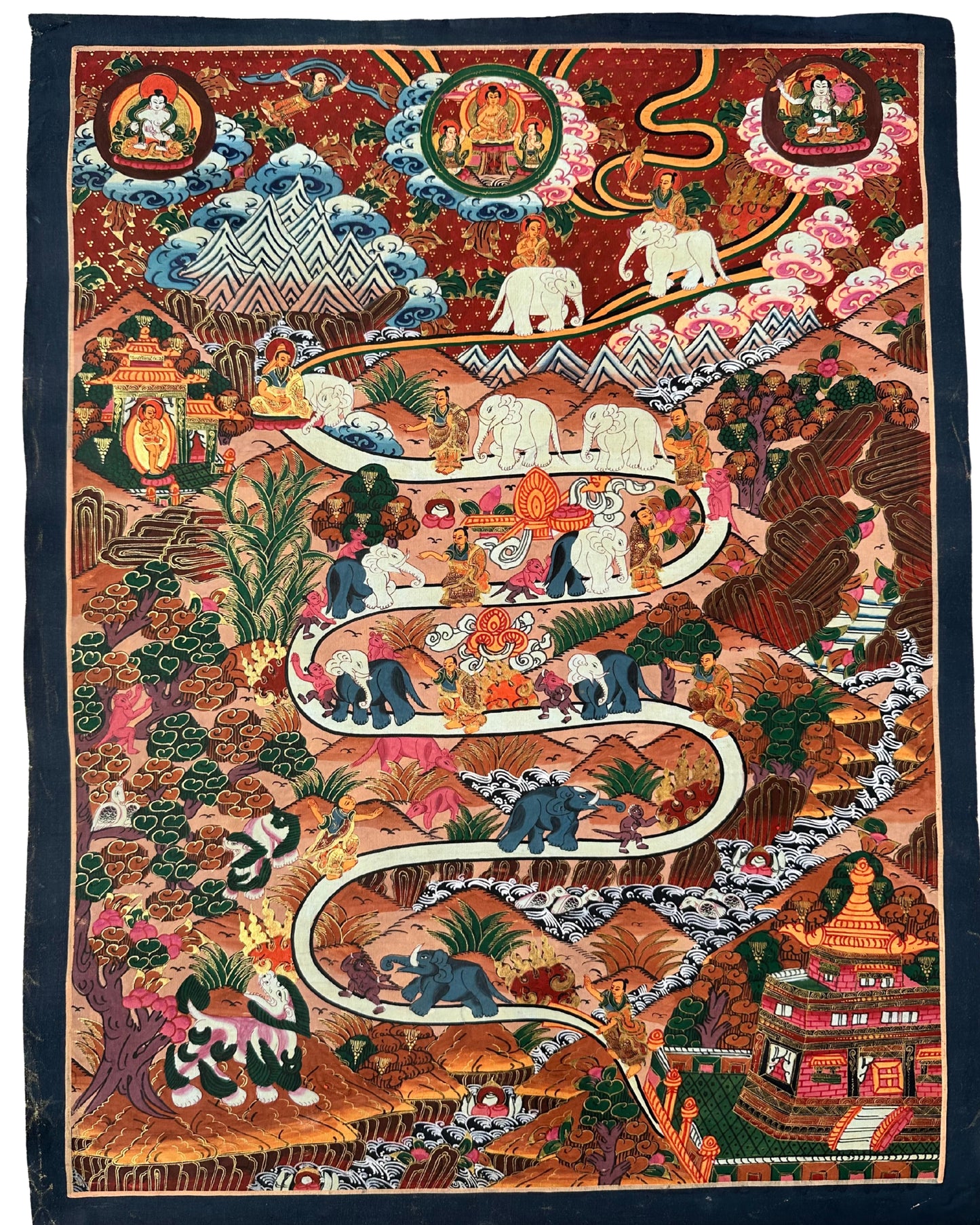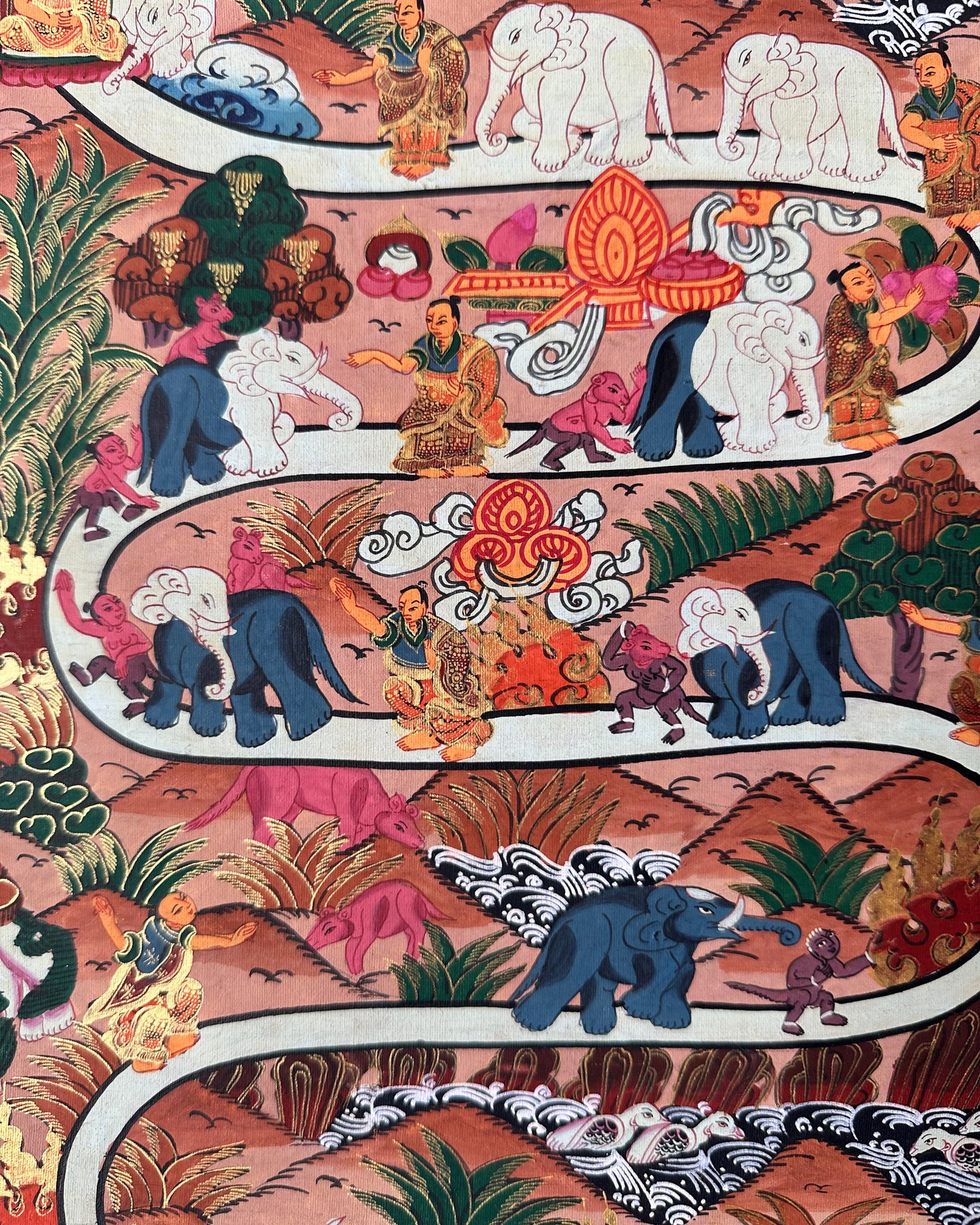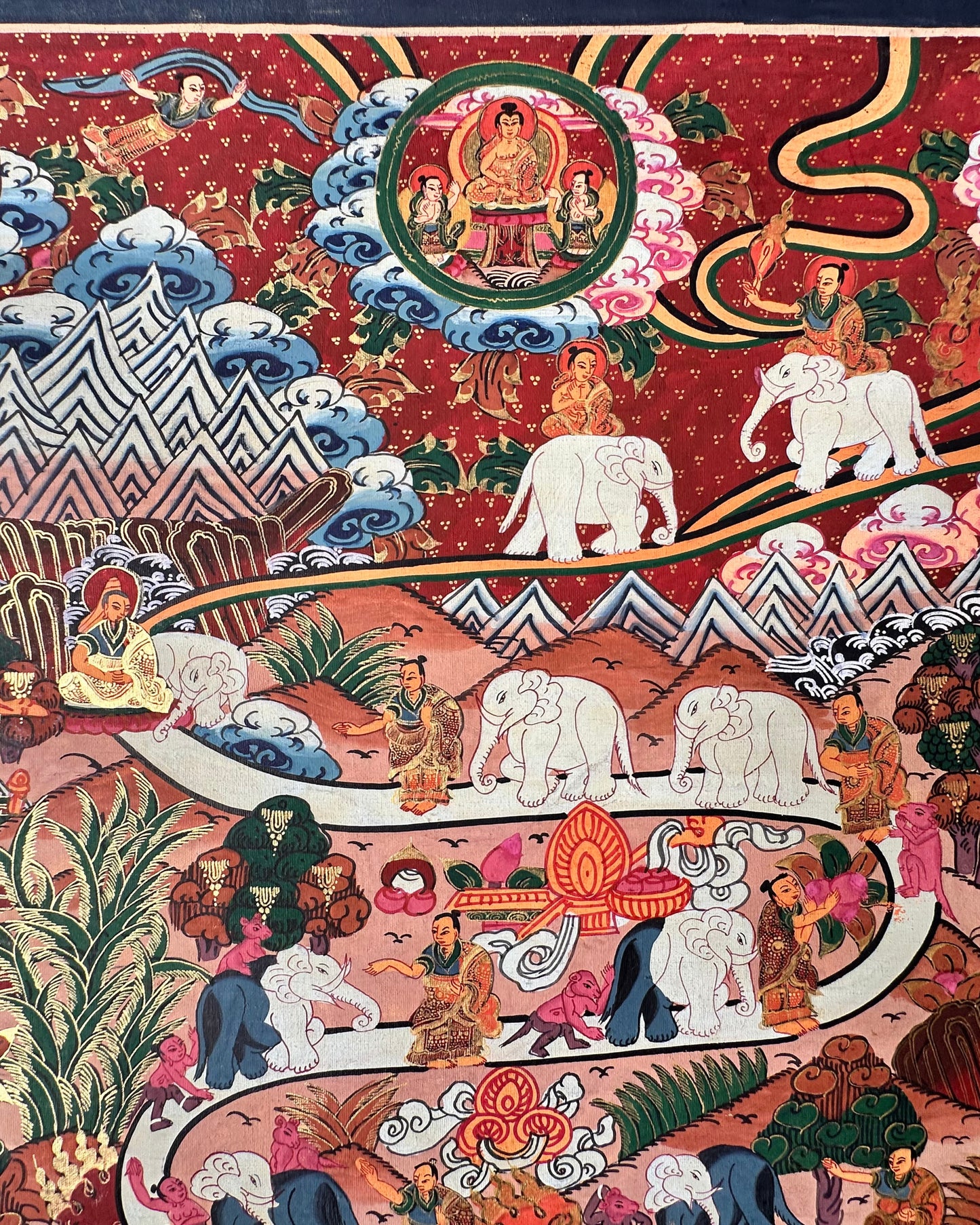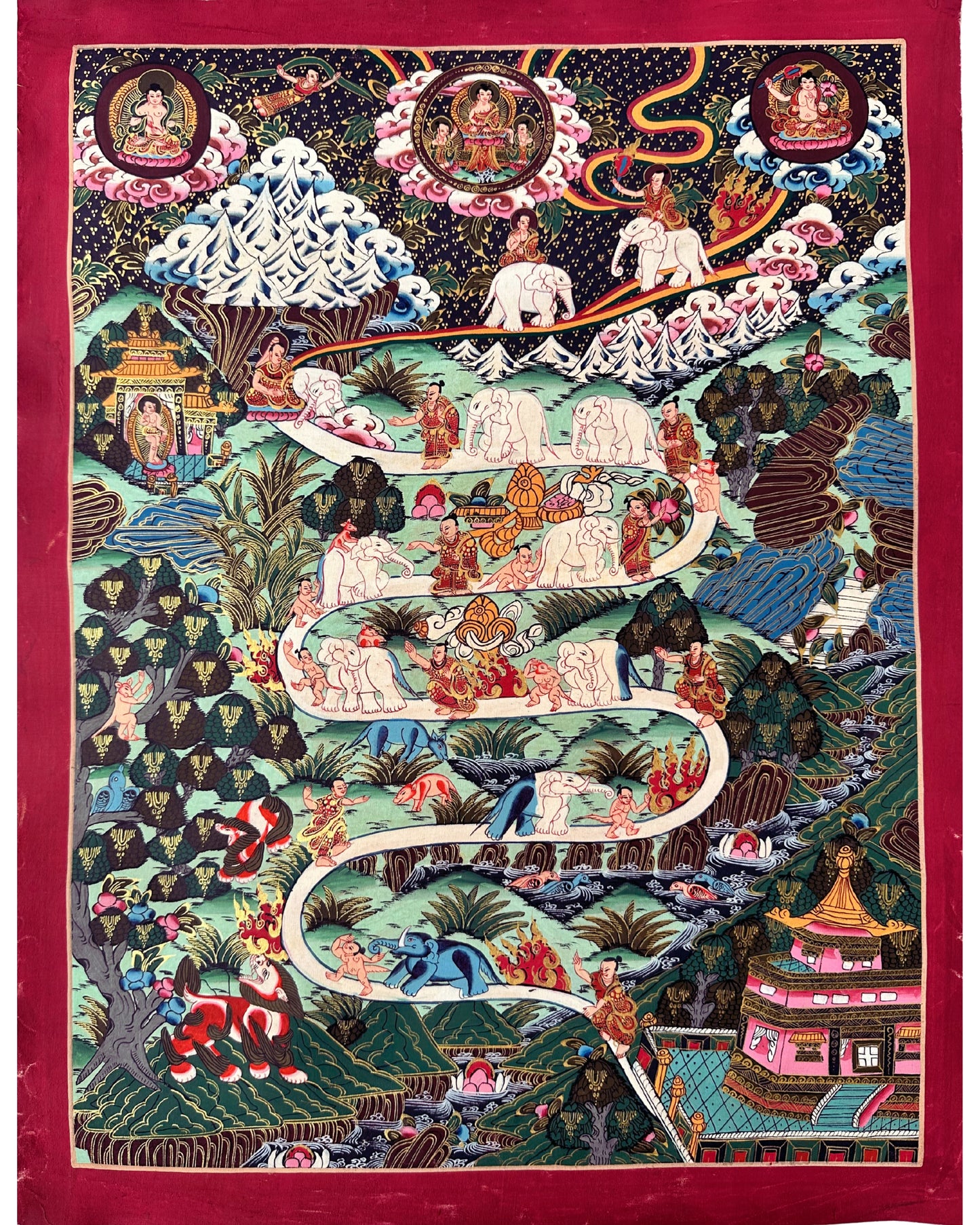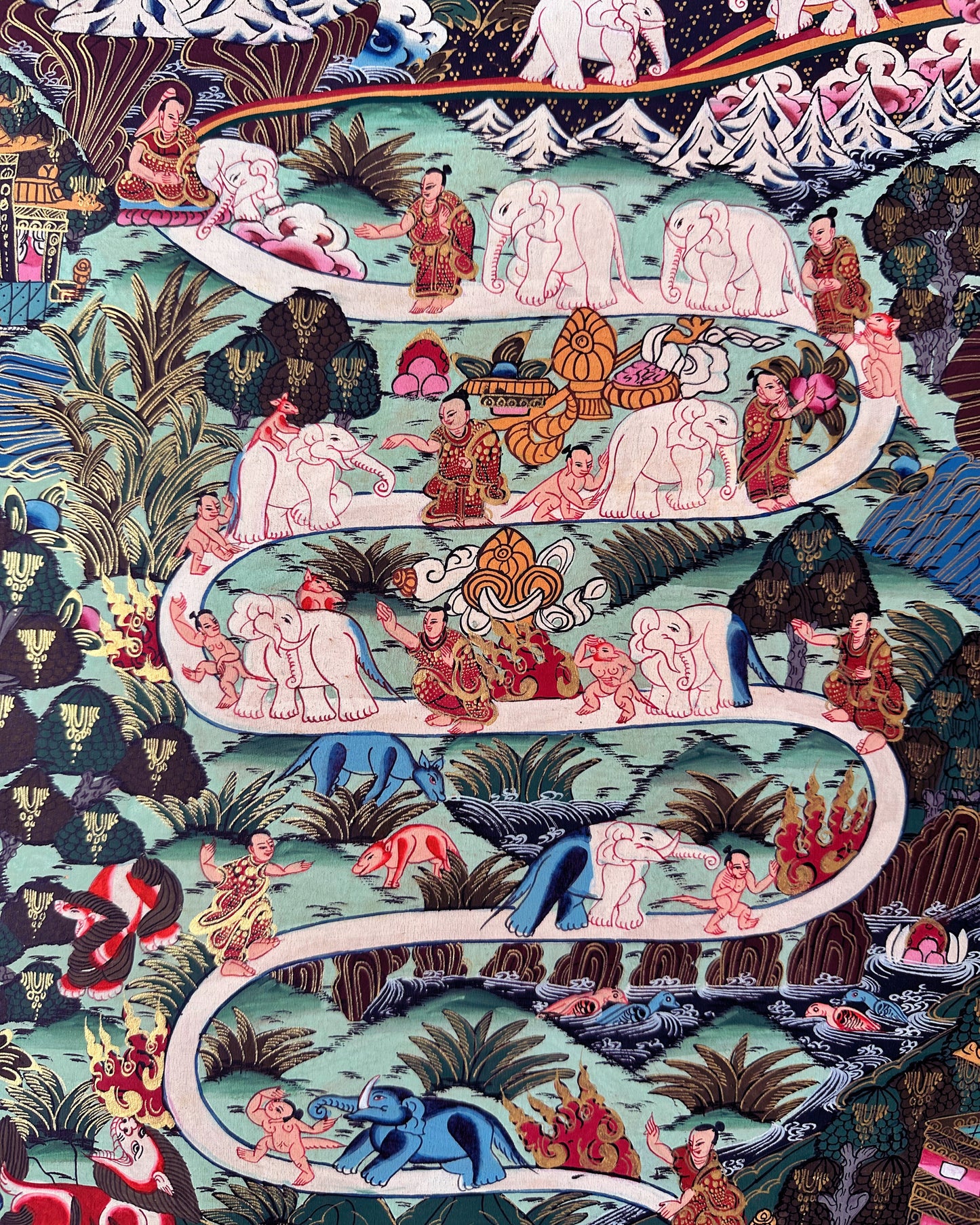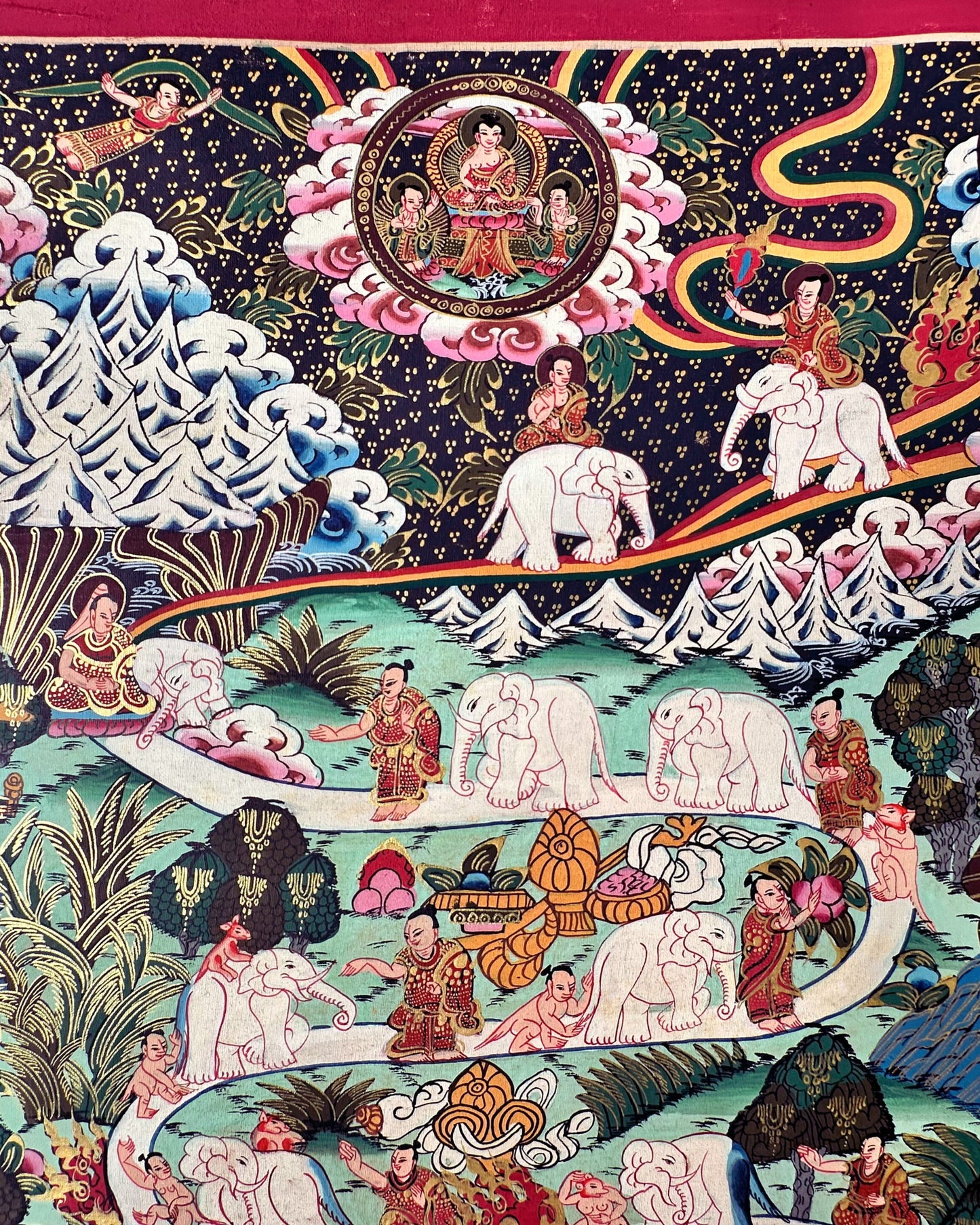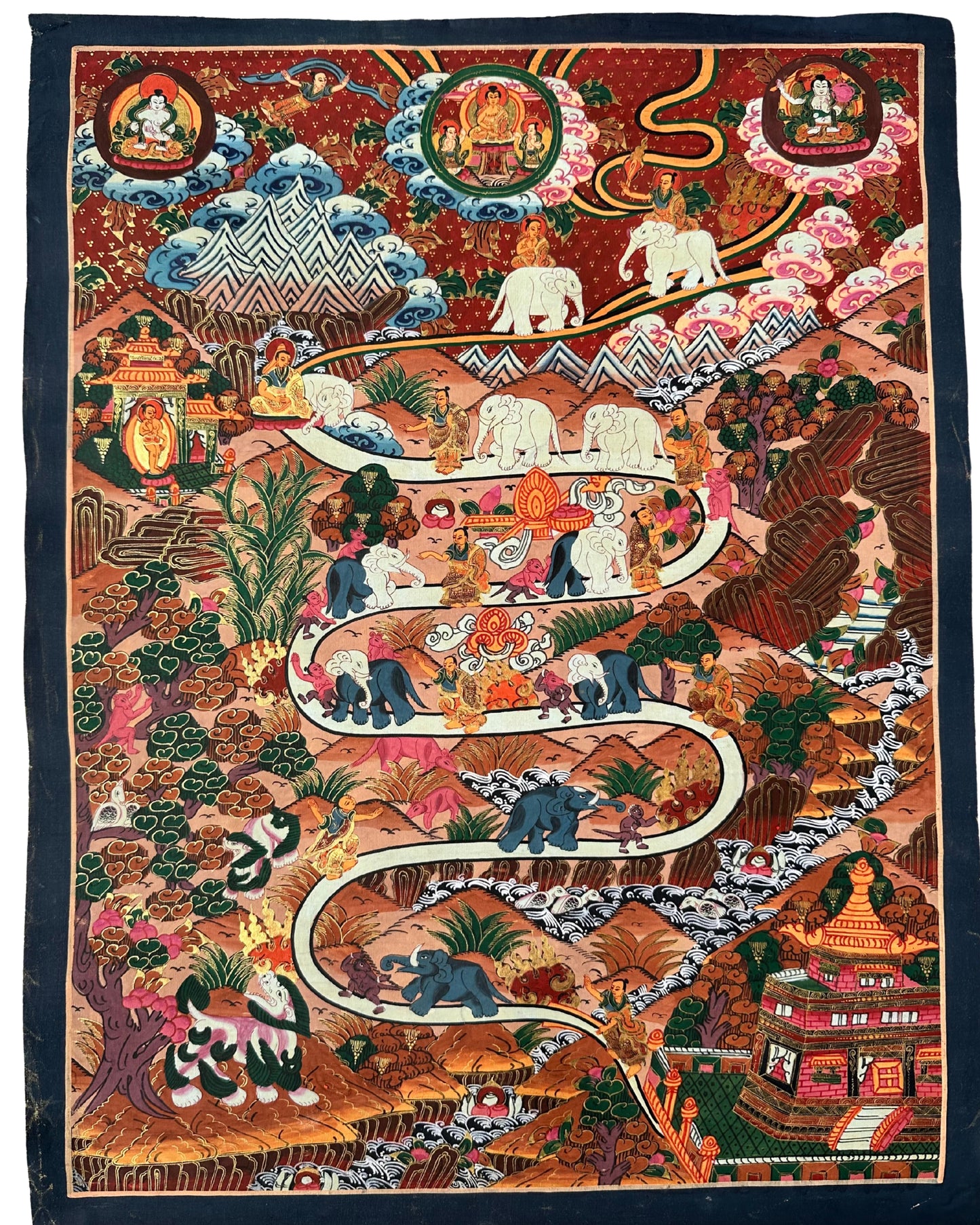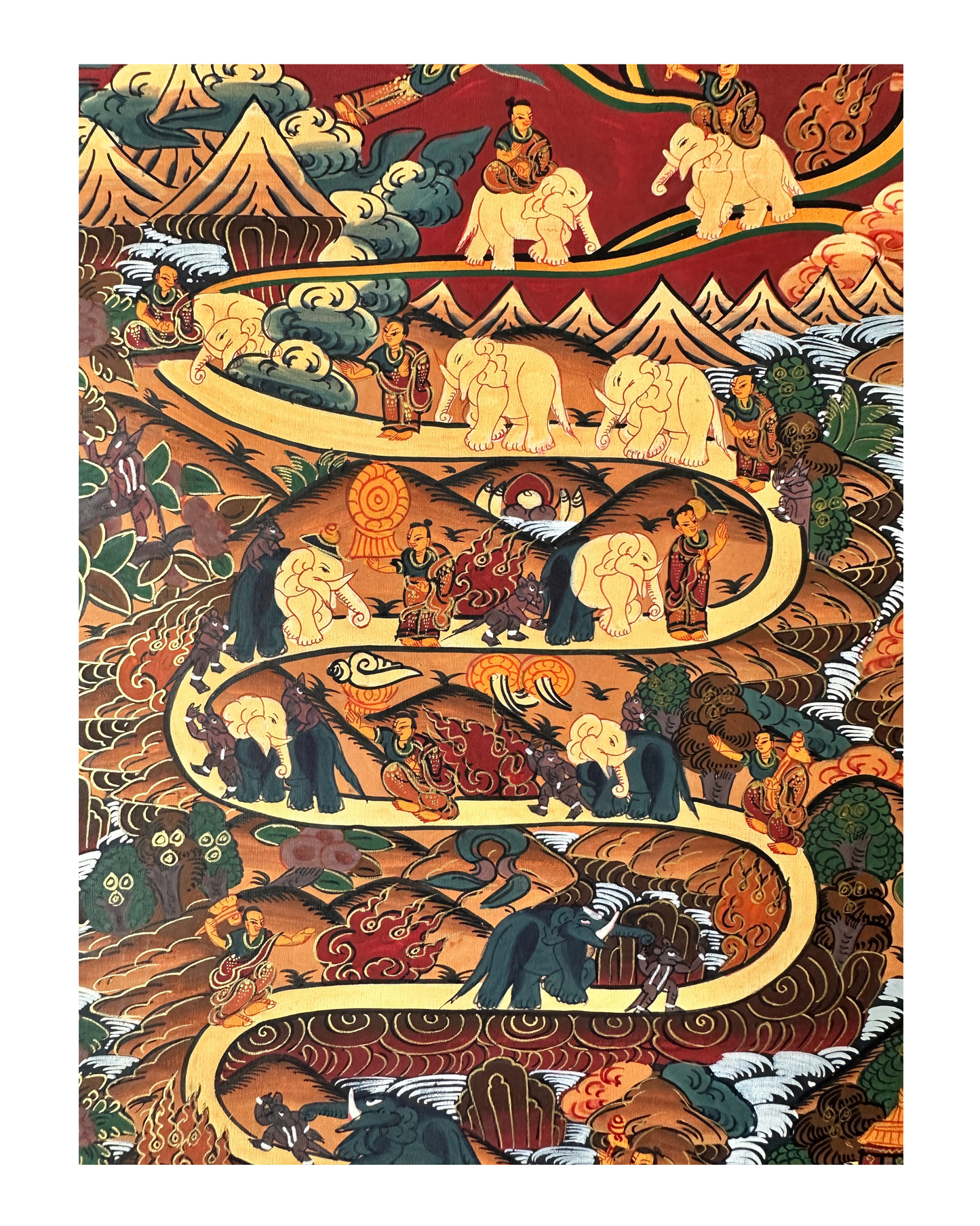Darjeeling Connection
Way to Heaven: Way to Nirvana Thangka
Way to Heaven: Way to Nirvana Thangka
Couldn't load pickup availability
Way to Heaven is a traditional Thangka depicting Shamatha (calm‑abiding practice) through archetypal symbols—the monk, elephant, monkey, rabbit, rope, stick, fire, sensory objects, rainbow, flaming sword —mapping nine progressive stages from distractedness to effortless attention. It’s a practical mnemonic and pedagogical tool for meditation practice, showing how a mind initially dominated by sensory distraction and dullness can be tamed and progressively transformed into single‑pointed, insightful awareness through mindfulness, effort, and watchfulness, and then on to insight (Vipassana) and liberation.
Limited Availability: Due to the meticulous craftsmanship involved in creating each thangka, we have limited stock available. Don't miss the opportunity to own this exceptional work of art and spirituality
Core Symbols and Their Meanings
The Monk (Meditator) - Represents the practitioner’s effort, mindfulness, and skillful means. His posture, position relative to the elephant, and what he holds indicate the state of practice: chasing, leading, sitting behind, or riding the elephant.
The Elephant (Mind) - Primary symbol of the mind’s power and its two primary afflictions:
-
Color shift: black → gray → white = progressive purification from gross dullness to clarity and purity.
-
Size and footprint: denotes potential vast capacity when tamed (servant of Dharma).
The Monkey (Distraction/Agitation) - Symbolizes coarse scattering, restlessness, and the mind’s tendency to follow sense‑objects or habituated thought. Its movement often “leads” the elephant in the early stages.
The Rabbit (Subtle Dullness / Passivity) - Symbolizes subtle fogginess, dreamy absorption, complacent “spacing out,” or disguised depression—pleasant but counterproductive states mistaken for progress.
Rope & Hook (Mindfulness / Watchfulness) -
-
Rope = recollection, mindfulness that restrains and reconnects attention to the object.
-
Hook = applied alertness and skilful redirection of attention (not punishment but guiding aid).
Stick (Discipline / Control) - A more forceful instrument for coarse stages, used when the mind needs strong regulation; decreases in importance as practice deepens.
Fire (Effort / Energy) - Represents the intensity (zest) of practice; the flame diminishes along the path, indicating that effort becomes less strenuous as one habituates to concentrated attention.
The Five Sense Objects (Cloth, Fruit, Conch, Cymbals, Mirror) - Concrete reminders of the five sensory attractions—touch, taste, smell, hearing, sight—that habitually divert attention.
Rainbow, Flaming Sword, Flying Monk - Post‑stages symbolism: rainbow = mental bliss and luminous experience; flaming sword = penetrating insight (wisdom cutting through ignorance/affliction); monk flying = bodily bliss or mastery of the subtle energies. These are symbolic of union of Calm‑Abiding and Insight, leading to realization of emptiness.
The nine stages of Shamatha
-
Cittasthapana — Stabilizing/placement of mind; strong effort, recognition of suffering; beginning concentration on breath.
-
Samsthapana — Continuous attention; rope & hook begin to guide mind; initial calming (white spot).
-
Avasthapana — Repeated attention; recollection tied to mind; beware pleasurable “spacing out” (rabbit).
-
Upasthapana — Close attention; mind turns back toward object; obedience increases.
-
Damana — Tamed attention; distractions behind mind; rabbit still present but weakening.
-
Shamana — Pacified attention; subtle distractions disappear; effortless focus begins.
-
Vyupasthamana — Fully pacified; near natural concentration; minor darkness may remain.
-
Ekotikarana — Single‑pointed attention; elephant fully white; concentration continuous.
-
Upacara Samadhi — Attentional balance; habituated samadhi; mind and object unify.
Care Instructions
Care Instructions
Materials
Materials
Specially treated cotton canvas; Paints made from stone minerals and gold dust
Dimensions
Dimensions
22" (l) x 16" (b) / 15" (l) x 11.75" (b)
Country of Origin
Country of Origin
India

